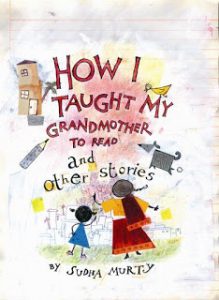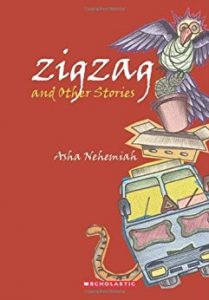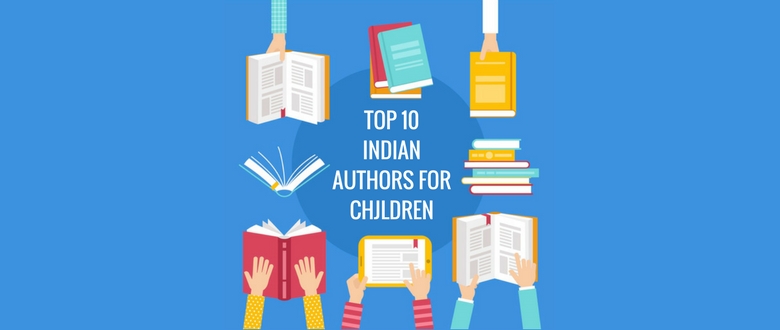Our Schools
Table of Contents
At Ekya, reading is given a special place as it is the foundation of all learning processes. In fact, our Love to Read Program is introduced early on at pre-primary school, with the aim to introduce children to magic of the written word, and encourage the life-long habit of reading, to make confident and interested readers. Reading not only helps children improve their vocabulary but also promotes their creative writing skills, and as a famous quote goes,
“A mind needs books as a sword needs a whetstone if it is to keep its edge”
While the Internet is filled with reading lists and book recommendations that are populated by authors from across the globe, The Hindu has listed out ten Indian authors for children who we would definitely recommend as well:
Ruskin Bond
With more than 50 books for children to his credit, Ruskin Bond remains on top of the list. All you need is blue sky and green trees to unfold Bond’s magic.

Must-reads: Pick up the Omnibus collections or looks for Rusty: The Boy from the Hills, Getting Granny’s Glasses, The Blue Umbrella, Crazy Times with Uncle Ken, Thick as Thieves: Tales of Friendship, The Whistling Schoolboy.
Subhadra Sen Gupta
She is best known for her historical fiction and books based on history and mythology. Her books have been part of the White Ravens Selection at the Bologna International Children’s Book Fair – A Clown for Tenali Rama (2003); Jodh Bai: The Diary of a Rajput Princess (2004); and 12 O’Clock Ghost Stories: Spooky, Scary and Plain Mysterious! (2005). The television serial, Khoj Khazana Khoj, was based on her book, Mystery of the House of Pigeons.
Must-reads: Let’s Go Time Travelling: Life in India through the Ages; A Mauryan Adventure, A Flag, A Song and a Pinch of Salt: Freedom Fighters of India, Foxy Foursome, Saffron White and Green: The Amazing Story of India’s Independence, Tagore and the Song of the Crazy Wind.
R.K. Narayan
Malgudi isn’t a fictional town because it came alive in R.K.Narayan’s writing. He is the creator of the endearing character, Swami who speaks to young minds and adults alike. Narayan’s work introduces kids to the carefree life of a rural young boy growing up in South India.

Must-reads: Under the Banyan Tree, Lawley Road and The Grandmother’s Tales.
Paro Anand
Short stories, novellas, novels, Paro Anand’s works draw from her extensive work with children through her programme Literature in Action. No Guns at My Son’s Funeral is a poignant account of how violence and strife affect children while The Little Bird Who Held the Sky Up with His Feet was on the 1001 Books to Read Before You Grow Up, which is a list of the world’s best books of all time. Wild Child and Other Stories deals with teenagers’ and their angsty lives.

Must-reads: Like Smoke: A Collection, The Tree with a Travelling Heart, The Secret Diary of the World’s Worst Genius, Wingless, Weed.
Sudha Murthy
A prolific writer, she has written nine novels and a collection of short stories and books for children. Her collection of short stories How I Taught My Grandmother to Read and Other Stories chronicle her memories and experiences with her grandparents and older relatives, and has been translated into numerous vernacular languages.

Must-reads: How I Taught My Grandmother to Read, The Day I Stopped Drinking Milk, Grandma’s Bag of Stories, The Magic Drum And Other Favourite Stories (children’s stories).
Ranjit Lal
Ranjit Lal’s books for children are a delight. From whimsical tales of animals (The caterpillar who went on a diet, The parakeet that squawked in English) to issues like female infanticide (Faces in the Water) and dealing with love and loss (Taklu & Shroom, Miracles), one can relate to his language, the situations and people. Those who like adventurous tales must read That Summer at Kalagarh, Secret of Falcon Heights and The Battle for No.19.

Must-reads: Tigers of Taboo Valley, Our Nana was a Nutcase, The Simians of South Block and the Yumyum piglets, The Dugong and the Barracudas, The Small Tigers of Shergarh.
Natasha Sharma
Natasha Sharma is an award winning children’s books author. She has published twelve books for children so far, including Bonkers! that won the SCBWI Crystal Kite Award 2014 for Asia and Middle East. Her book Kaka and Munni is on the CBSE recommended reading list for schools.

Must-reads: Squiggle Takes a Walk – All About Punctuation, Rooster Raga, Anaya’s Thumb, What Should I Wear Today? and Kaka and Munni.
Asha Nehemiah
Asha Nehemiah’s stories for children are a mix of humour, fantasy and adventure. She writes for children of all ages and her stories have been translated into Hindi, Tamil, Assamese and Bengali. She believes that stories are a wonderful way to get children thinking and talking about various issues.

Must-reads: Granny’s Sari, Wedding clothes, Surprise Gifts,The Runaway wheel, Mrs Wolly’s Funny Sweater, Zigzag and Other Stories.
Arup Kumar Dutta
This journalist from Assam is probably best known for The Kaziranga Trail about how three young boys outwit poachers in the national park. The book won Shankar’s Award in 1979 and was also made into a film by the Children’s Film Society of India. Apart from this, Dutta has 16 other books for children, all of which are based in the Northeast and are filled with adventure and mystery.
Must-reads: Trouble at Kolongijan, The Blind Witness, A Story about Tea, The Lure of Zangrila, Revenge, Smack.
Anu Kumar
This writer put her degree to history to use in her children’s books. Mythquest was a nine-book series on animals from mythology. Then there are the adventures of Atisa, the 14-year-old time-travelling detective, which are a lovely mix of mythology, history and fiction. She also has a couple of books that make history interesting for young readers.

Must-reads: How did the Harappans Say Hello and 16 Other Mysteries of History; Across the Seven Seas, Travellers’ Tales of India, In the Country of Gold-Digging Ants, A Chola Adventure.
That is a list of home-made literature that would keep your inner bibliophile occupied for quite a while. Keep those pages turning and happy reading!
Sourced from The Hindu
The Week That Was – Welcoming July
 Our children learning more about the festival of Ramadan[/caption]
Speaking of reasons to celebrate, Ekya students did us proud as their models were featured on the World Industrial Design Day (WIDD) 2017 Exhibition held at Gallery Manora, Bangalore. These models are products of the annual Design Thinking Challenge organized by and for the Ekya community to tackle social relevant problems and answer human centred challenges such as ‘How might we better integrate the elderly into Bangalore’s society?’ and ‘How might we solve the garbage problem in Bangalore to improve the lives of citizens? With designers, artists and the industry’s who’s who attending the exhibit, our children’s work was put in the spotlight, sharing space with the exhibits from Tanishq, Tata Elxsi Id, Srishti Institute of Art, Ezetap and Footsy.
[gallery size="large" link="file" ids="1864,1863,1862"]
As we celebrate our students' achievements, our Grade 4 student Ashwat Prasanna deserves to be lauded for authoring a book titled “Journey Through Space Time – Unlock the Secrets of Space”. At the age of eight, our young author from Ekya JP Nagar has compiled his thoughts on six different topics in Science – from the explaining the age of the Universe to answering how the Earth was made and why the Sun is so hot.
[caption id="attachment_1868" align="aligncenter" width="606"]
Our children learning more about the festival of Ramadan[/caption]
Speaking of reasons to celebrate, Ekya students did us proud as their models were featured on the World Industrial Design Day (WIDD) 2017 Exhibition held at Gallery Manora, Bangalore. These models are products of the annual Design Thinking Challenge organized by and for the Ekya community to tackle social relevant problems and answer human centred challenges such as ‘How might we better integrate the elderly into Bangalore’s society?’ and ‘How might we solve the garbage problem in Bangalore to improve the lives of citizens? With designers, artists and the industry’s who’s who attending the exhibit, our children’s work was put in the spotlight, sharing space with the exhibits from Tanishq, Tata Elxsi Id, Srishti Institute of Art, Ezetap and Footsy.
[gallery size="large" link="file" ids="1864,1863,1862"]
As we celebrate our students' achievements, our Grade 4 student Ashwat Prasanna deserves to be lauded for authoring a book titled “Journey Through Space Time – Unlock the Secrets of Space”. At the age of eight, our young author from Ekya JP Nagar has compiled his thoughts on six different topics in Science – from the explaining the age of the Universe to answering how the Earth was made and why the Sun is so hot.
[caption id="attachment_1868" align="aligncenter" width="606"] Ashwat Prasanna, Grade 4 Ekya JP Nagar with his book[/caption]
Over at the Kanakapura Road campus, our tiny tots observed Animal Day – some coming to school dressed as their favourite animals while a few others had their animal toys to accompany them to class.
[caption id="attachment_1877" align="aligncenter" width="2048"]
Ashwat Prasanna, Grade 4 Ekya JP Nagar with his book[/caption]
Over at the Kanakapura Road campus, our tiny tots observed Animal Day – some coming to school dressed as their favourite animals while a few others had their animal toys to accompany them to class.
[caption id="attachment_1877" align="aligncenter" width="2048"] Observing Animal Day at Ekya Kanakapura Road[/caption]
Not far away, our pre-schoolers at the BTM campus celebrated ‘Scientist Day’, donning the lab coats of Issac Newton, Albert Einstein, Abdul Kalam, Aryabhatta, and Graham Bell amongst the many eminent personalities in the field. In addition to learning more about their work, our little budding scientists were also audience to several experiments that were demonstrated by some of parents who joined in on the fun.
[caption id="attachment_1876" align="aligncenter" width="900"]
Observing Animal Day at Ekya Kanakapura Road[/caption]
Not far away, our pre-schoolers at the BTM campus celebrated ‘Scientist Day’, donning the lab coats of Issac Newton, Albert Einstein, Abdul Kalam, Aryabhatta, and Graham Bell amongst the many eminent personalities in the field. In addition to learning more about their work, our little budding scientists were also audience to several experiments that were demonstrated by some of parents who joined in on the fun.
[caption id="attachment_1876" align="aligncenter" width="900"] Celebrating Scientist Day at Ekya BTM Layout[/caption]
As our young students dressed up to mark these special days, our older children at the ITPL campus dressed up for a competitive week. Agni House fielded their best line-up to take on Bhoomi House on the Basketball court as the campus hosted its second match of the Inter-house Basketball Tournament. An intense game from the get-go, Bhoomi house took home the win with a score of 36-26.
[caption id="attachment_1872" align="aligncenter" width="1200"]
Celebrating Scientist Day at Ekya BTM Layout[/caption]
As our young students dressed up to mark these special days, our older children at the ITPL campus dressed up for a competitive week. Agni House fielded their best line-up to take on Bhoomi House on the Basketball court as the campus hosted its second match of the Inter-house Basketball Tournament. An intense game from the get-go, Bhoomi house took home the win with a score of 36-26.
[caption id="attachment_1872" align="aligncenter" width="1200"] Basketball Teams (Bhoomi House & Agni House)[/caption]
It was not just the game of Basketball that made the week exciting at our ITPL School; Election Day came by as our budding leaders concluded their week long campaigning and the school came together to vote.
[caption id="attachment_1871" align="aligncenter" width="3264"]
Basketball Teams (Bhoomi House & Agni House)[/caption]
It was not just the game of Basketball that made the week exciting at our ITPL School; Election Day came by as our budding leaders concluded their week long campaigning and the school came together to vote.
[caption id="attachment_1871" align="aligncenter" width="3264"] New wave of Student Leaders at Ekya ITPL[/caption]
Elected into the school’s Student Council, our election winners took their oaths and were sworn in as Council members at the Investiture ceremony led by Ms. Sharmila Choudhary, Senior Director of Academics at Ekya.
With the week that was, we at Ekya Schools look forward to July and welcome all that lies ahead with this new month.
New wave of Student Leaders at Ekya ITPL[/caption]
Elected into the school’s Student Council, our election winners took their oaths and were sworn in as Council members at the Investiture ceremony led by Ms. Sharmila Choudhary, Senior Director of Academics at Ekya.
With the week that was, we at Ekya Schools look forward to July and welcome all that lies ahead with this new month.









Leave a reply